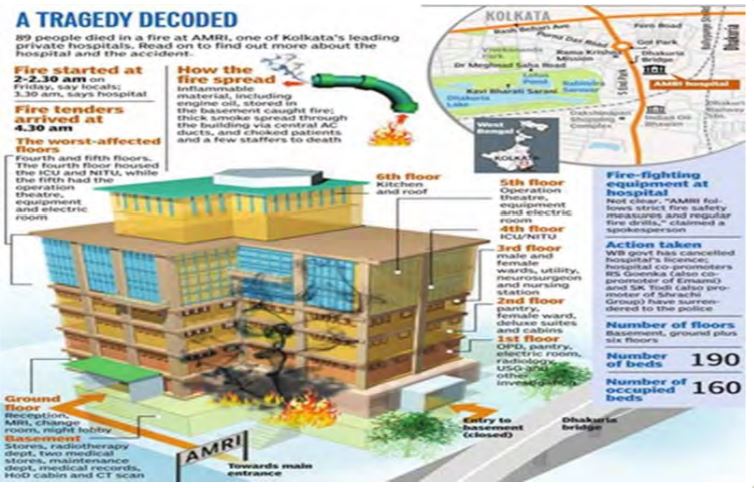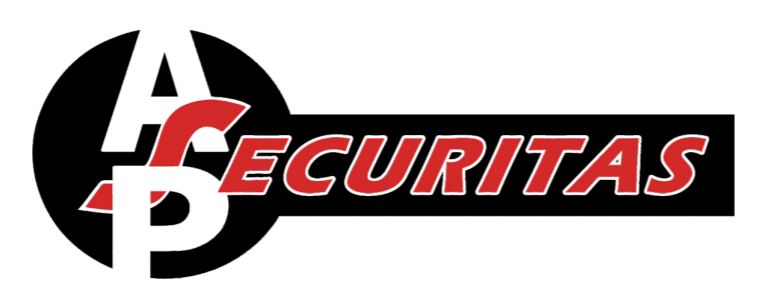
ANIL PURI
CMD, APS GROUP
A thought leader and an action catalyzer rolled into one – Anil Puri is a rare combination of a visionary, and one who has mastered the art of strategic and tactical thinking to the core. He has been using this combination to seed new ideas and to lead them to their implementation onground. This has been a consistent feature of his career. He has rich experience of approximately 35 years in corporate in diverse domains & from functional managerial level to apex as chairman of a corporate group. His acumen for handling crisis management has prompted him to share his exclusive and niche experiences. Here he will be discussing the topic of Disaster Management which has been one of his favorite subjects. In the series of the articles on Disaster Management, the fire incident of Dec 2011 in AMRI Hospital, Kolkatta has been picked up as a classical case to drive home the key and essential issues.
INTRODUCTION
Socio-economic variables depict a high concentration of population in the cities in terms of density per house. Kolkata has the highest number of persons per household (11 person/ household) (IRAD Report, 2013) which renders it in most vulnerable situation due to this kind of fire outbreak. Advanced Medicare and Research Institute (AMRI) is a private hospital chain jointly promoted by the R. S. Goenka led Emami Group, the S. K. Todi led Shrachi Group of companies, and State Government of West Bengal in 1996. The hospital chain has its head office and 6 branches in Kolkata, West Bengal, India, and 6 branches in Bangladesh. AMRI Hospital is ISO 9001:2000 certified, and is located in a densely populated area of at Dhakuria in South Kolkata.
SEQUENCE OF EVENTS
I n the early hours of the morning on December 9, 2011, a massive fire broke out at annex building of AMRI Hospital Dhakuria, Kolkata. The fire was first noticed by local residents at around 2.30 am. Fire Control Room, Kolkata was informed about the incident at 4.10 am which responded immediately and the fire services arrived at the site within 20 min. Though the fire was primarily restricted within the basement of the hospital, but the poisonous smoke was sucked by air conditioning ducts that carried it through the rooms and the corridors of the seven-story centrally air conditioned hospital. Entire hospital building was filled with thick pile of smoke, caused tremendous suffocation for all the indoor patients. Ninety people choked to death, many of them are in their sleep or were not in condition to even escape. Among the list of dead persons, there were nationals from other countries and states within India. There were victims from Bangladesh, Bihar, Tripura and two nurses from Kerala.

As reported by the media, local people noticed the fire at hospital building around 2.30 am and tried to enter the hospital building for rescue. The relatives of the patients, who were waiting outside the hospital overnight also tried to help the trapped patients inside the hospital. The security staff of the hospital stopped the entry in mass into the AMRI annex building, and tried to douse the fire with their own available resources. Fire department rushed into action after receiving the dis-tress call at 4.10 am and reached the spot with available sophisticated firefighting equipment. Around 25 fire engines and hydraulic ladders were used for the rescue and dousing of the massive fire and smoke. It was reported by the Joint Commissioner of Police (Crime) that none of the smoke alarms got activated even when smoke started billowing out of the basement. It seems that they had been in switched off mode because they would go off at the slightest smoke and disturb the patients. The sprinklers, gas jets and other water re-leasing equipment that are meant to fight fire, were defunct and none of them went off to prevent the fire. Un-official reports are such that the basement was being used as a smokers’ corner, keeping the fire alarms in switch off mode.
This was the second fire at AMRI hospital in three years. The fire services department, government of west Bengal had warned AMRI Hospital in September, 2011 about the inappropriate and dangerous use of the hospital basement. It had served a notice to the hospital authorities questioning the fact that instead of parking cars, the hospital was using its basement for storing empty and filled up LPG cylinders, torn mattresses, and wooden boxes and had converted the entire space into a storehouse. With a December 5 deadline, the hospital was allowed three months’ time to comply, but it did not. The enforcement of law is also in question.
CAUSES OF FIRE INCIDENT
Though the specific cause of fire could not be established, the director of the fire department in his opinion stated that the fire was most likely caused due to an electrical short circuit in the basement car park. The combustible items like empty and filled up LPG cylinders, PVC pipes, rejected mattresses and wooden boxes immediately got the flame. However, the fact is that the fire didn’t spread to the other part or level of the hospital and was confined to the basement only. As the hospital was centrally air-conditioned, the smoke started billowing out of the basement and spread fast to all the floors through the air-conditioning duct. Soon thereafter, the air-conditioners went off because of the power cut and smoke started accumulating into the hospital rooms and corridors. The centrally air-conditioned hospital didn’t have windows and glass façade walls. As a result, smoke could not be ventilated outside the building. A critical component like mechanical ventilation of centrally air-conditioned buildings was missing in the hospital building. The fire brigade later broke open the glass facade to help the gas escape, though same was too late.
ROOT CAUSE ANALYSIS
- The basement was full with inflammable articles like paper, cotton, mattress, chemicals which amounted to blatant violation of fire safety practices.
- Smoke detector and fire alarm system of the building were kept non-operative out of ignorance or over simplification.
- Water sprinklers became inactive since same had never been tested/ used.
- Fire extinguishers at the basement did not work because their functionality was never checked through periodic inspections.
- No signage for emergency exit was displayed.
- The external façade was sealed with toughened glass. No arrangement for alternate ventilation. Maximum people died due to suffocation rather than burning.
- There was no ramp or fire escape stairs through which evacuation could be done.
- After start of fire, concerned security people and staff did not put the alarm as it was made inactive. During enquiry it was revealed that the fire alarm used to get activated with a little smoke.
- Also most of the staff who were in duty flew away to save their own life.
- Patients were told not to worry and no evacuation was initiated even after one and half hour of detection of fire.
- Central AC system and electricity supply were not switched off. Carbon monoxide gas spread through AC ducts.
- No formal training had been conducted ever for security and hospital staff to deal with the emergencies, especially how to evacuate critically ill patients.
- No training was ever conducted to operate the fire alarm systems or fire extinguishers.
- Due to absence of escape route, patients were hung through ropes for rescuing. Many of the patients failed to bear so much stress and fell of amounting to serious injuries due to free fall from height.
- The evacuation was unduly delayed by hospital staff who attempted to douse the fire which was out of their control.
- Hospital staff and patients were never trained how to escape or evacuate the building in case of an emergency.
- The fire brigade was informed almost 90 min after the fire broke out.
- The hospital authority tried to hide the truth from the Administration. Timely information to the fire brigade would have minimized the loss of lives and property.
- Toxic smoke spread over all the building through the AC duct as AC damper did not function. Had it worked properly, deaths due to suffocation could have been avoided.
RESPONSE FROM THE ADMINISTRATION
Fire department, West Bengal lodged a FIR against the concerned authority of AMRI Hospital, Dhakuria, Kolkata and the sequence of the incident of AMRI Fire as reported by the Disaster Management Department, Govt. of West Bengal are as follows,
- Fire control room received a call at about 4.10 am on 09/12/2011 from Lal Bazar Police Control Room about a fire breaking out at AMRI Hospital Annex building, Kolkata.
- There was a further alarm at about 11 am regarding radiation leakage from the lower basement of the building which has several machines like MRI, Cobalt Therapy etc.
- NDRF was requisitioned and their anti-radiation team came and checked the entire premises, no radiation was detected in the area. Government of India also sent a team of officers/ scientists from Atomic Energy Regulatory Board – Emergency Response Centre, Kolkata and Meghnad Saha Institute. The team confirmed about no radiation leakage in the area.
- Police Control Room at 8 pm on 11th December confirmed the death of 89 people in the incident and 57 injured people who underwent treatment for injuries sustained during the said fire in different hospitals.
- All the dead bodies were centrally brought to SSKM hospital (Super specialty Govt. Hospital) and their post mortem was done in SSKM hospital.
- Principal Secretary, Health & Family Welfare Department personally supervised the post mortem process and identification of bodies and handing over the dead bodies to the next kin.
- An FIR was lodged with the Police authorities and six board level officials of AMRI group were arrested by Kolkata Police.
ACTION TAKEN BY THE ADMINISTRATION
Govt. of West Bengal had suspended the license of the AMRI hospital with immediate effect. A judicial probe was ordered for the entire catastrophe. The Department of Health & Family Welfare, Govt. of West Bengal had directed the hospital authority to close the hospital and transfer the patients to another hospital. A 15 member special investigation team was formed under the leadership of Assistant Commissioner, to investigate the case. The fire brigade submitted a report to the commissioner of police, on the preliminary inspection that it conducted at the hospital premises. It is on the basis of this report that the police arrested six directors of the hospital under four non-bailable sections of the Indian Penal Code, namely, sections 304 – culpable homicide not amounting to murder, 308 – attempt to commit culpable homicide, 285 – negligent conduct with respect to combustible materials and 34 – common interests.
CONCLUSION
I n consequence of the AMRI hospital fire incident, Government of West Bengal modified the existing ‘West Bengal Act XXVI of 2010, The West Bengal Clinical Establishments (Registration and Regulation) Act, 2010’ and drafted ‘The West Bengal Clinical Establishment Rules, 2012’ with the required modifications.
Since, independence, India has lost thousands of lives and property worth crores in fire related incidents. Fire hazards are common threat to establishments and in most of the cases; it had been revealed that fire occurred due to sheer negligence. Fire safety audit of several major hospitals in Delhi and Mumbai has revealed that more than 50% of the hospitals lack fire prevention measures. In case of high- rise buildings, the scenario is equally bad. In February 2012, the fire department in Mumbai had issued notices to as many as 383 high-rise buildings for not complying with fire safety regulations. Several high-rise buildings, approximately 60% in Gurgaon, had not renewed their no-objection certificate from the fire department. In Jaipur, a tourist hub, more than 90% of the high-rise buildings have measurably inadequate fire-fighting measures. A survey done in 2018 revealed that most of the buildings do not adhere to fire prevention measures as described under the National Building Code of India for they do not care about getting no-objection certificates from concerned authorities, as it does not entail any major penalty being a non-statutory binding.
I feel, fire departments across the country are in desperate need of additional funds to modernize and upgrade their equipment as well as manpower skills. The most challenging part for the fire departments is to reach to the top of high-rise buildings for want of a necessary equipment to reach to the top. As per the India Risk Survey 2012 a report prepared and published by FICCI depicted that “In India Emergency Response mechanism varies from state to state but no-where does it cater to the requirements of Global Best Practices. Central and state governments have been putting their efforts to provide for police stations, hospitals, fire stations and transport as nearest to the habitations as possible, but critical gaps remain in capacity building. For example, international standards recommend fire station after every 3 km, in India, fire stations are often found at far off locations as 10 km. Moreover, their response time even in cities some-times exceeds beyond 30 minutes.
This case study has been picked up by me after due diligence, as it highlights the maximum lessons one can learn from a fire incident in a hospital. The fire protection measures as enumerated in guidelines of National Building Code or for that matter any statutory binding need to be applied in design of building and thereafter during occupation stage. The conceptualization of Emergency Action Plan (EAP) and periodic Building Evacuation Mock Drill can go a long way in prevention of such tragic incidents. The equipment profiling and installation alone does not serve the purpose but orientation and handling, training and awareness drive can be the game changer in keeping the premises free from fire incidents. The recurrence of fire incidents shows apathy of the authorities towards public safety. The time has come when India needs to make public safety as absolute value and fix the accountability on lapses with deterrence. Recently, the fire accident in Mumbai hospital (located inside Mumbai’s Dreams Mall) resulted in the death of 10 people. An effective fire safety protocols could have prevented the devastating effect on lives and property. The tragedy points towards the failure of the authorities to make fire safety a systemic compulsory in public buildings.
